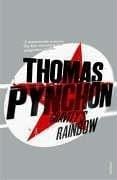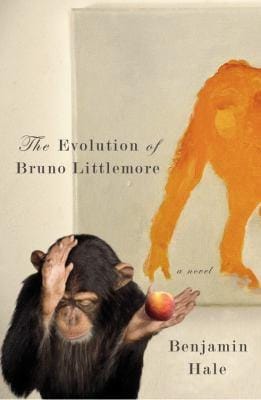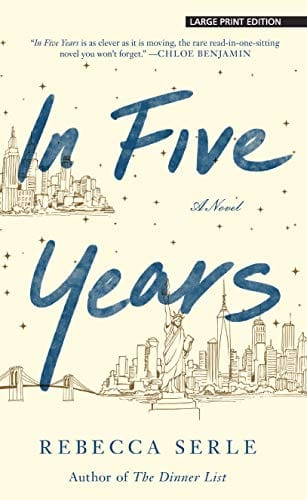Gravity's Rainbow: An 800-Word Guide to Pynchon's Epic Novel
Explore Thomas Pynchon's Gravity's Rainbow in an 800-word guide covering plot, themes, characters, style, context, and reading tips.

Introduction to Gravity's Rainbow
Thomas Pynchon’s Gravity’s Rainbow, first published in 1973, remains one of the most challenging and rewarding novels in twentieth-century literature. Dense, dazzling, and frequently hilarious, the book follows characters scattered across Europe at the close of World War II, all seemingly drawn toward the ominous trajectory of the German V-2 rocket. This introduction gives readers a concise overview of why Gravity’s Rainbow continues to fascinate students, critics, and adventurous book lovers nearly fifty years after its debut.
Plot Overview
At its surface, the novel traces the mission of Tyrone Slothrop, an American lieutenant stationed in London whose sexual encounters appear uncannily to predict where V-2 rockets will strike. When Allied intelligence officers notice the correlation, Slothrop becomes the focus of a sprawling investigation that sends him through bombed-out cities, secret laboratories, and decadent nightclubs across defeated Germany. Along the way the reader meets pirates who fry banana breakfasts, behaviorist psychologists bent on mind control, and a choral ensemble of scheming bureaucrats. Rather than a straightforward quest narrative, the plot constantly fractures, echoing the ballistic arc of the rocket itself and keeping readers thrillingly off balance.
Key Themes
Power, paranoia, and entropy dominate Gravity’s Rainbow. Pynchon explores how governments and corporations harness emerging technologies to extend control, turning humans into mere components of an enormous war economy. The omnipresent fear that every pattern hides a deeper conspiracy fuels the novel’s comic yet unsettling atmosphere. Entropy, borrowed from thermodynamics, becomes a metaphor for social and psychological decay: information scatters, identities dissolve, and systems break down. Simultaneously, Pynchon celebrates moments of anarchic resistance—songs, sex, jokes, and community—that burst through the machinery of control. By juxtaposing oppressive structures with flashes of exuberant freedom, the author invites readers to question whose gravity truly governs their lives.
Major Characters
Tyrone Slothrop may be the nominal protagonist, but Gravity’s Rainbow revels in a vast ensemble. Katje Borgesius, a Dutch double agent, embodies the novel’s fascination with role-playing and desire. Roger Mexico, a statistician, and Jessica Swanlake sustain a fragile romance inside wartime London’s ruins, highlighting the tension between data and emotion. Pirate Prentice, a naval officer who stages extravagant dreams, represents imaginative escape from repression. Meanwhile, sinister figures such as Captain Blicero, the sadistic German rocket commander, personify death-driven technocracy. Each character, however briefly encountered, illuminates another facet of Pynchon’s sprawling meditation on freedom and compulsion.
Postmodern Style and Structure
Pynchon’s prose is famously baroque: long sentences erupt into song lyrics, limericks, cinematic stage directions, and bawdy jokes. The novel deploys more than a million words and over four hundred characters, yet it seldom offers conventional chapter breaks. Instead readers navigate abrupt shifts in perspective, tense, and register, producing an exhilarating collage that critics label postmodern. Fragments of comic books, film noir, scientific reports, and jazz riffs co-exist on a single page. This hybridity forces readers to abandon passive consumption and actively assemble meaning, echoing the book’s thematic warning about surrendering interpretive authority to state or corporate narrators.
Historical Context and the V-2 Rocket
Gravity’s Rainbow is set between Advent 1944 and September 1945, when Germany’s V-2 rockets rained destruction on Allied cities. Pynchon meticulously researches the rocket program, revealing how physicists, industrialists, and military planners collaborated to weaponize space travel. The novel also anticipates the Cold War by tracing how Nazi scientists were absorbed into American and Soviet research, laying foundations for both NASA and the arms race. By foregrounding this continuity, Pynchon contests neat moral binaries and suggests that technological exaltation often masks the same old appetite for profit and domination.
Cultural Impact and Legacy
Upon publication, Gravity’s Rainbow won the National Book Award but was famously denied the Pulitzer Prize after jurors deemed it obscene and unreadable. Since then it has influenced generations of writers, from David Foster Wallace to Marisha Pessl, and seeded countless academic papers across disciplines such as physics, ecology, and cultural studies. Its playful intertextuality foreshadowed hypertext and internet culture, inspiring fans to build elaborate online concordances. Musicians, game designers, and filmmakers likewise mine its imagery of drifting balloons, card catalogs, and apocalyptic rockets. The novel’s refusal to resolve mysteries has ensured its enduring position as a touchstone of experimental fiction.
How to Approach Reading Gravity's Rainbow
Newcomers need not fear. Approach Gravity’s Rainbow like a kaleidoscope rather than a crossword: let patterns emerge without forcing immediate clarity. Keep a character list, read aloud to savor rhythm, and take breaks when the prose turns manic. Companion guides and annotated editions can help, but curiosity and a sense of humor are equally valuable. Remember that confusion is an intended effect; surfing the chaos often leads to unexpected insight.
Conclusion
In the half-century since its release, Gravity’s Rainbow has only grown more resonant in an era of surveillance capitalism, drone warfare, and algorithmic prediction. By confronting the forces that seek to engineer both rockets and human desire, Pynchon’s masterpiece challenges readers to reclaim their own trajectories.



